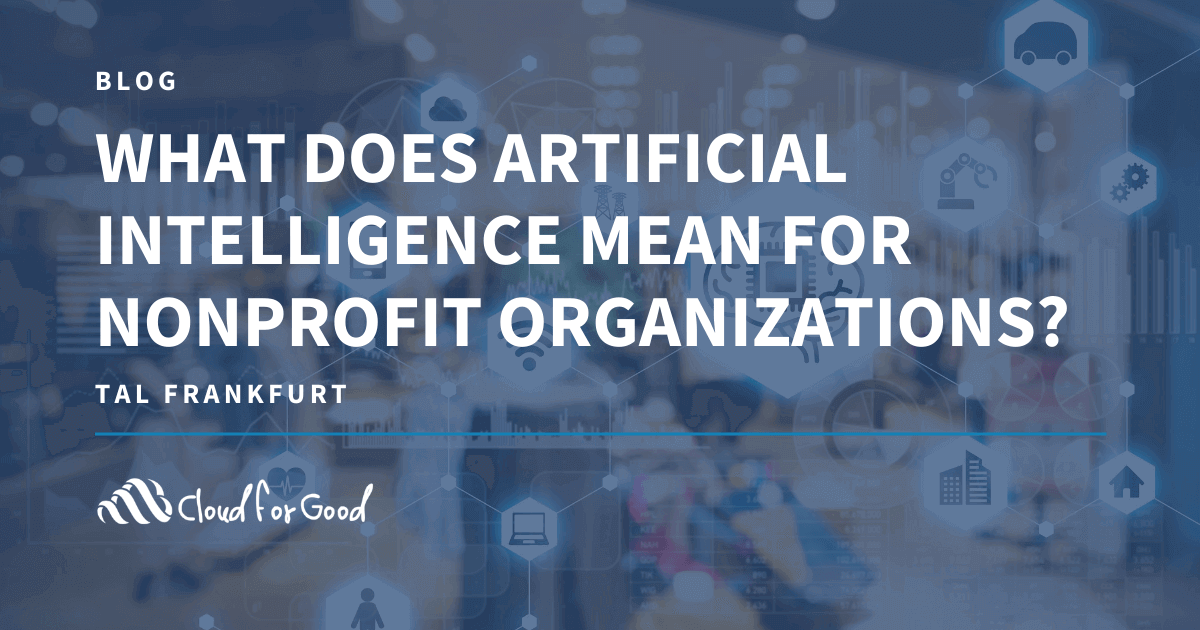NOTE: This blog was originally posted on Forbes. Read it here.
Artificial Intelligence is an area of computer science that trains machines to perform tasks that would normally be done by humans. There has been a lot of buzz — both positive and negative — around AI over the last few years. In 2016, Microsoft CEO Staya Nadella declared that “bots are the new apps.” Last year, Elon Musk warned about the dangers of AI and the rise of the robots. We live in an era with billions of devices that are actively learning us and each other. This is one of the reasons digital transformation has the potential to influence nearly every aspect of our lives.
While there has been an increase in conversations about AI over the past few years, we all have been seeing its effects for quite some time. AI is how Netflix is able to suggest a video that you might enjoy, Amazon is able to recommend a product that you may need next week based on past purchases, and it is also how your email filters spam messages that you do not want to receive in your inbox. AI is already a part of our day-to-day lives, and it will continue to be prevalent for years to come.
Organizations are becoming more aware of the power of AI and are actively searching for ways to bring AI into their respective communities, expand their offerings and improve upon operational capabilities.
Below, I will explore three AI focus areas and their implications for nonprofit organizations.
Machine Learning And Process Automation
The first focus area is the cognitive automation of machine learning and process automation. Robots can already build cars, move inventory in large warehouses and even perform surgeries. The Smart Tissue Autonomous Robot (STAR) did a better job on the operating table than human surgeons who were given the same task.
Handwriting, mapping and image recognition are a few of the examples of how AI can increase operational efficiencies of high volume or workflow based work. Take organizations such as iNaturalist and eBird, which are using AI to identify hundreds of thousands of species that were crowd-sourced by their community of scientists. Without AI, it would take decades to go through each of these images manually.
With AI and deep-learning systems, a computer learns to classify what it sees in coral reef pictures in just a matter of months. Coral researchers are embracing advances in computer science and software, accelerating under-sea mapping of reefs around the world. AI is helping the scientific community advance further and learn more in shorter periods of time.
Engaging With Humans
The second AI focus area involves employing cognitive technology to engage with people. The most common example of this is the voice-enabled device. Siri, Amazon’s Alexa and other devices will turn lighting off and on or lower a thermostat based on human commands.
Chatbots, or bots, are becoming great tools for nonprofits and activists to engage with and educate their communities. Two great examples of bots include Hello!Vote, which helps you get the information you need to cast an informed ballot at a local polling place, and Resistbot, which connects constituents with elected officials. Bots are also great tools to help organizations raise funds. Charity: Water was the first nonprofit to collect donations via a bot on Facebook Messenger. However, it has not yet published the results of its fundraising campaign. It will be interesting to see how effective bots are in the future when it comes to fundraising efforts.
Personalized And Actionable Insight
The last focus area I want to highlight is cognitive insights. This refers to AI’s ability to understand complex data sets and make personal recommendations that would otherwise be hard to identify. AI allows us to not only generate actionable tasks based on what happened, but it also can predict what is likely to happen next.
Organizations have collected a wealth of information about donors and supporters, including their past giving patterns, event attendance and wealth data. Employing technologies with cognitive insight allows fundraisers to better understand data, optimize donor acquisitions, recommend next engagement steps and levels and generate personalized messages to deliver to a large population. Fundraising efforts can be better tracked and predicted using AI.
Gone are the days that each donor receives the same message at the same time via the same communication medium. Combining cognitive insights, along with a cognitive engagement solution, will create even stronger relationships with constituents, while giving organizations an opportunity to increase revenue streams. For example, marketing automation solutions via Salesforce’s Journey Builder tool can help create donor journeys with personalized paths to deliver communications based on the actual donor behavior in near-real time. (Full disclosure: Cloud for Good is a Salesforce implementation partner.) Another example is a startup called Gravyty, which uses technology that is able to predict which donors will make the next big gift and customize an email to them based on previous engagements with them.
The benefits of AI far exceed the cost savings created by automation and increased operational efficiencies. AI will help organizations improve the decision-making process by deriving deep and actionable insights. It will also boost engagement with constituents by creating customized and intelligent programs and services and allow an organization to grow on a greater scale, through the automation of tasks that were previously executed manually.
You may also enjoy:





